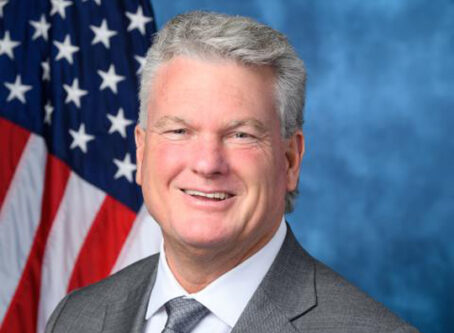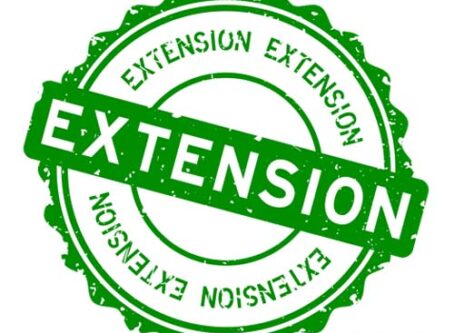Bills in eight states pursue left lane changes
Work continues at statehouses to address left lane use. Multiple measures focus on truck travel.
The Owner-Operator Independent Drivers Association and the National Motorists Association say that blocking the left lane, whether intentional or not, results in reduced road safety and efficiency.
Minnesota
A Minnesota Senate bill singles out trucks from far left-hand lane use.
Minnesota law already requires any vehicle moving at less than the normal speed of traffic to stay to the right. Violators face $50 fines. A 4-year old law added a $75 surcharge for failure to allow another vehicle to pass, bringing the total fine amount to $125.
Sponsored by Rep. Eric Lucero, R-Dayton, SF851 would go a step further to prohibit truck travel in the far left lane. Exceptions would apply for circumstances that include overtaking or passing another vehicle.
Lucero also pursued the rule change during the 2021 session. The then-state representative’s bill did not move from committee.
This year’s pursuit is in the Senate Transportation Committee.
OOIDA opposition
The Owner-Operator Independent Drivers Association says that truck drivers are first-hand observers of the negative consequences of misguided traffic laws, and, while perhaps not intended, restricting trucks from certain lanes poses serious challenges for truckers and jeopardizes the safety of the traveling public.
New Mexico
In New Mexico, a state lawmaker is once again in pursuit of a rule change to keep trucks to the right on interstates.
State law already requires all vehicles to stay to the right. Violators face $25 fines. Certain exceptions apply.
Sen. George Munoz, D-Gallup, is behind a bill to limit truck lane use.
Specifically, SB102 would mandate that large trucks traveling on multiple-lane highways outside of municipalities stay in the right lane. Exceptions would include overtaking and passing another vehicle.
Violators would face $250 fines.
One year ago, a truck left-lane restriction bill introduced by Munoz cleared the legislature only to receive a pocket veto from Gov. Michelle Lujan Grisham.
Hopeful the outcome will be different this year, Munoz recently told the Senate Tax, Business and Transportation Committee that action is necessary to improve road safety.
“You get on I-40, and you’re going along at 75 mph, and a semi pulls out at 65 and tries to pass the other semi at 67, and traffic backs up for 10 miles and frustration levels with people are getting ridiculous,” Munoz testified.
The committee voted unanimously to advance SB102 for further consideration on the Senate floor.
Oklahoma
One Oklahoma Senate bill also focuses on truck travel.
Statute already limits left lane use on highways with at least two lanes of traffic in the same direction. Drivers are required to stay to the right unless passing or preparing to turn left or for safety measures.
Sponsored by Sen. Joe Newhouse, R-Tulsa, the bill would add a provision to prohibit large trucks from left lane use on highways with at least three lanes of traffic in the same direction. The restriction would apply to vehicles with a gross weight rating of at least 10,000 pounds.
The bill, SB1070, is in the Senate Public Safety Committee.
Virginia
Meanwhile, a Virginia House bill to further single out large trucks in the left lane is likely dead.
State law already prohibits trucks from travel in the left lane of any interstate highway with more than two lanes in one direction where the posted speed limit is at least 65 mph.
The restriction also applies to travel in the left-most lane on any interstate highway with more than two lanes within the Eighth Planning District and along Interstate 81 regardless of the speed limit.
Additionally, commercial vehicles are required to travel in the right-most lane when operating at a speed at least 15 mph below the posted speed limit on any interstate highway with no more than two lanes in one direction.
Certain exceptions apply.
Sponsored by Delegate Clinton Jenkins, D-Suffolk, HB1535 would expand the restriction to include interstate highways where the posted speed limit is at least 55 mph.
A House Transportation subcommittee voted to “lay on the table” the bill. The term signifies the bill’s likely demise.
West Virginia
Left lane use for all travelers is the topic of a West Virginia House bill.
State law specifies that vehicles stay to the right except to overtake and pass another vehicle in the same direction.
The House Technology and Infrastructure Committee recently voted to advance a bill that would prohibit vehicles from driving slowly in the far left lane.
Specifically, drivers would be prohibited from traveling slow in the far left-hand lane of a roadway or interstate for more than 1.5 miles without completing a passing maneuver of another vehicle.
First-time offenders would face fines up to $100. Subsequent violations would result in escalating fine amounts. Certain exceptions would apply.
The bill awaits consideration in the House Judiciary Committee before it can move to the full House.
Florida
Since 2014, Florida law prohibits travelers from driving too slowly in the left lane of a multilane highway if they “reasonably should know” they are begin overtaken by another vehicle. Drivers traveling the speed limit also are required to yield to vehicles exceeding the posted speed limit.
Violators face $161 fines. Florida licensed drivers also face up to three points being added to their license.
A House bill would revise the state’s left lane rule.
The bill, H421, would forbid any vehicle from continuous operation in the far left-hand lane of roadways posted at least 65 mph unless overtaking and passing another vehicle, or preparing to turn left.
Exceptions would be made for emergency vehicles and vehicles engaged in highway maintenance or construction.
H421 is in committee. An identical Senate bill, S464, also is in committee.
Kentucky
One Kentucky bill also addresses slow travel in the far left-hand lane.
Statute requires vehicles traveling below the posted speed limit on any limited access highway with a posted speed limit of at least 65 mph to stay to the right. Exceptions are made for passing, yielding to traffic entering the highway, or when unsafe to use the right lane.
A House bill would authorize $25 fines for anyone driving under the posted speed in the far left lane. Certain exceptions would apply.
The rule would apply to interstates and other limited access highways with at least two lanes in each direction.
The bill, HB149, is in the House Transportation Committee.
South Carolina
A South Carolina bill covers left lane use on the state’s busiest roadways.
In 2021, Gov. Henry McMaster signed into law a bill to modify the state’s left lane rule.
Previously, state law required any vehicle moving at less than the normal speed of traffic to stay to the right. Exceptions to the lane rule are made for situations that include preparing to turn or to overtake and pass another vehicle.
No penalties were attached to the law.
The revision signed into law by McMaster applies the left lane rule to situations on highways with at least two lanes when a vehicle is traveling behind a slower-moving vehicle. Fines are limited to $25.
Additionally, commercial drivers are exempt from the rule when they are unable to move into the right lane safely due to other vehicles overtaking or passing the truck on the right, or when a truck’s driver is unable to move into the right lane safely due to a highway grade or other vehicles overtaking or passing the truck on the right.
Advocates said at the time the change was necessary because the deterrent was not enough to discourage the behavior.
Fine amount revisited
Sen. Ross Turner, R-Greenville, is looking to update the relatively new rule.
His bill is intended to further increase the deterrent. S304 would quadruple the fine amount from $25 to $100.
The additional fine revenue would be routed to the South Carolina State Highway Patrol.
It is in the Senate Transportation Committee. LL









